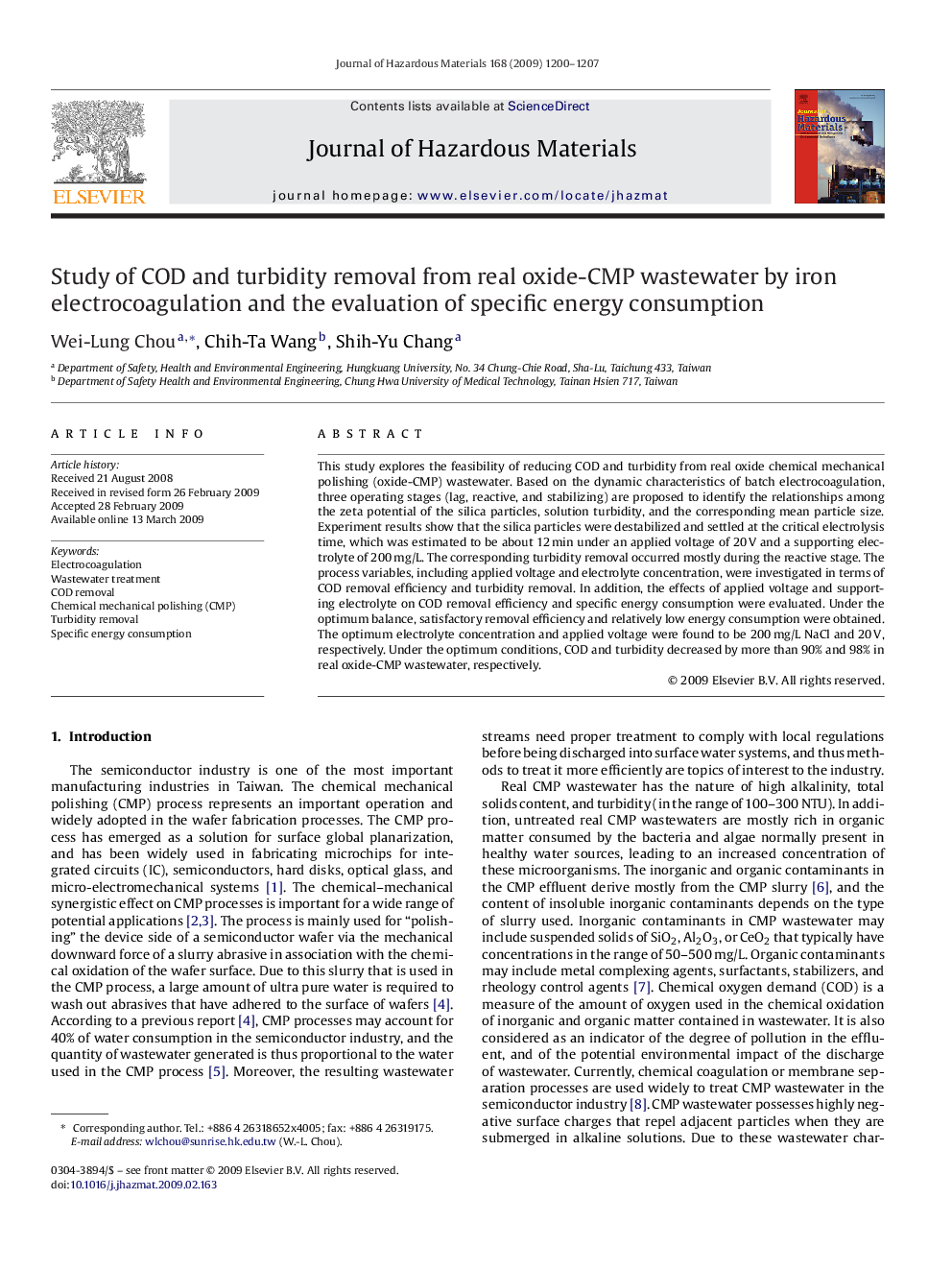| Article ID | Journal | Published Year | Pages | File Type |
|---|---|---|---|---|
| 581732 | Journal of Hazardous Materials | 2009 | 8 Pages |
Abstract
This study explores the feasibility of reducing COD and turbidity from real oxide chemical mechanical polishing (oxide-CMP) wastewater. Based on the dynamic characteristics of batch electrocoagulation, three operating stages (lag, reactive, and stabilizing) are proposed to identify the relationships among the zeta potential of the silica particles, solution turbidity, and the corresponding mean particle size. Experiment results show that the silica particles were destabilized and settled at the critical electrolysis time, which was estimated to be about 12Â min under an applied voltage of 20Â V and a supporting electrolyte of 200Â mg/L. The corresponding turbidity removal occurred mostly during the reactive stage. The process variables, including applied voltage and electrolyte concentration, were investigated in terms of COD removal efficiency and turbidity removal. In addition, the effects of applied voltage and supporting electrolyte on COD removal efficiency and specific energy consumption were evaluated. Under the optimum balance, satisfactory removal efficiency and relatively low energy consumption were obtained. The optimum electrolyte concentration and applied voltage were found to be 200Â mg/L NaCl and 20Â V, respectively. Under the optimum conditions, COD and turbidity decreased by more than 90% and 98% in real oxide-CMP wastewater, respectively.
Keywords
Related Topics
Physical Sciences and Engineering
Chemical Engineering
Chemical Health and Safety
Authors
Wei-Lung Chou, Chih-Ta Wang, Shih-Yu Chang,
